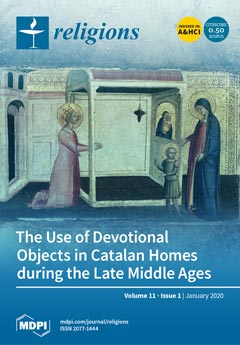In early twenty-first-century China, online fantasy is one of the most popular literary genres. This article studies a subgenre of Chinese fantasy named
xiuzhen 修真 (immortality cultivation), which draws on Daoist alchemy in particular and Chinese religion and culture in general, especially that
[...] Read more.
In early twenty-first-century China, online fantasy is one of the most popular literary genres. This article studies a subgenre of Chinese fantasy named
xiuzhen 修真 (immortality cultivation), which draws on Daoist alchemy in particular and Chinese religion and culture in general, especially that which was negatively labelled “superstitious” in the twentieth century, to tell exciting adventure stories.
Xiuzhen fantasy is indebted to
wuxia xiaoshuo 武俠小說 (martial arts novels), the first emergence of Chinese fantasy in the early twentieth century after the translation of the modern Western discourses of science, religion, and superstition. Although martial arts fiction was suppressed by the modernizing nation-state because it contained the unwanted elements of magic and supernaturalism, its reemergence in the late twentieth century paved the way for the rise of its successor,
xiuzhen fantasy. As a type of magical arts fiction,
xiuzhen reinvents Daoist alchemy and other “superstitious” practices to build a cultivation world which does not escape but engages with the dazzling reality of digital technology, neoliberal governance, and global capitalism. In this fantastic world, the divide of magic and science breaks down; religion, defined not by faith but embodied practice, serves as the organizing center of society, economy, and politics. Moreover, the subject of martial arts fiction that challenged the sovereignty of the nation-state has evolved into the neoliberal
homo economicus and its non-/anti-capitalist alternatives. Reading four exemplary
xiuzhen novels,
Journeys into the Ephemeral (
Piaomiao zhilv 飄渺之旅),
The Buddha Belongs to the Dao (
Foben shidao 佛本是道),
Spirit Roaming (
Shenyou 神遊), and
Immortality Cultivation 40K (
Xiuzhen siwannian 修真四萬年), this article argues that
xiuzhen fantasy provides a platform on which the postsocialist generation seek to orient themselves in the labyrinth of contemporary capitalism by rethinking the modernist triad of religion, science, and superstition.
Full article





